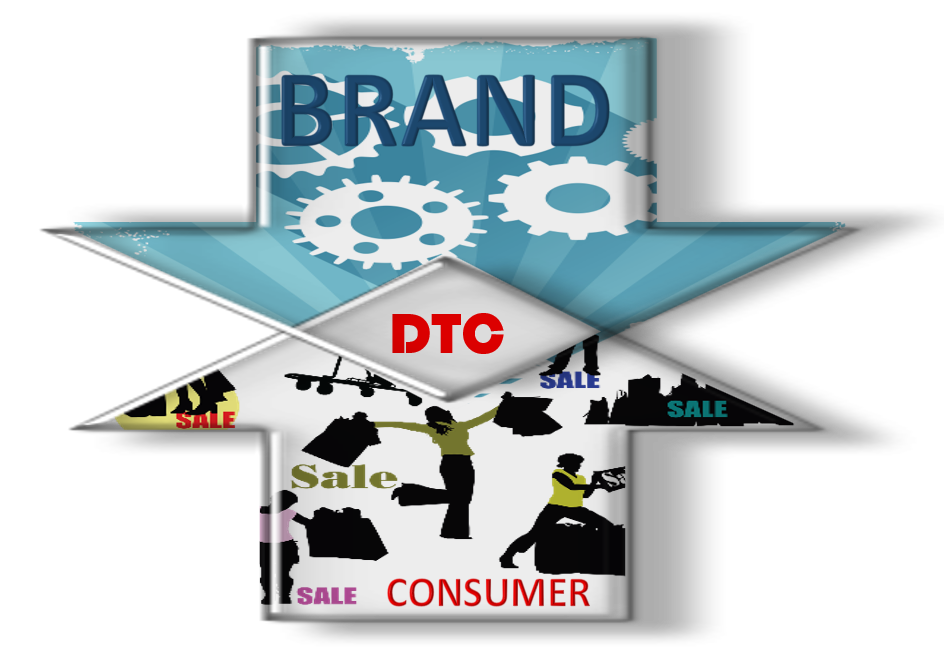One of the most prominent retail trends accelerated by the pandemic has been increased e-commerce sales. According to Tom Standage (@tomstandage), editor of The Economist‘s ‘The World in 2021‘, “The adoption of new technological behaviors in response to the pandemic, from video-conferencing to online shopping, means usage has already reached levels that were not expected for many more years.”[1] He adds, “Grannies have discovered online shopping.” As the world continues to struggle with the effects of the pandemic, the digital path to purchase continues to see an increase in traffic. Ali Amarsy, Senior Vice President of Global Product Strategy at Publicis Commerce, writes, “COVID-19 has catapulted us into the future. In 2020, global e-commerce sales growth jumped three years in the first three months of stay-at-home mandates, with a share of overall retail matching 2023 predictions.”[2] As a result of this change in consumer behavior, manufacturers of all sorts of goods have started to take notice.
Dusty Dean, Co-Founder of BitCadet, asks, “What do Goodyear Tire & Rubber, Mattel and iRobot have in common?”[3] His answer, “Over the past five years, they’ve all started or expanded a direct-to-consumer (DTC) e-commerce strategy and sell (some or all products) directly to their customers online. These manufacturers may serve different markets, but they know what their buyers want and how customer’s expectations are changing, and they’re capitalizing on it.” One of the most significant risks associated with a DTC strategy is creating tension in manufacturer/retail relationships. An enormous amount of retail sales are still made through more traditional channels. As Dean notes, manufacturers exploring DTC strategies are not necessarily trying to eliminate those traditional sales channels. He explains:
“[Manufacturers are] not necessarily saying goodbye to current dealers or retailers, but they are sending a message that they want to expand their reach and have other options. As a result, they have realized huge savings on restrictive margins (where a 3rd party sets the price which reduces/restricts the margins you can earn), gained control of their brands and are generating significant revenue with a personalized e-commerce direct-to-consumer sales strategy.”
Nevertheless, Karl Lauri, Managing Team Member at MRPeasy, cautions, “DTC is not a panacea and potential downsides include the risk of impairing relationships in the established retail chain, which remains important.”[4]
DTC Strategy Considerations
Jon Reily (@jonreily), an experience and commerce executive at Merkle, observes that DTC has transformed from a transactional exchange to an exchange in which customer engagement and personalization are key essentials.[5] He also notes that retailers are pushing back as their relationships with manufacturers soften. He notes, “Thanks to COVID-19’s impact in early 2020, consumers now expect the ability to buy virtually anything, anywhere, at any time. … However, this has driven what had already been a thorn for consumer product goods [or CPGs] even deeper as these marketplaces and retailers have no incentive to push one brand over another. Instead, they just want the sale. As a result, CPGs who previous to this really only had to worry about brand-building via advertising and planograms with retailers for good placement in stores are now facing a world where their traditional partners are now agnostic as to the brands they sell and, in some cases, are directly competing with CPGs for market share.”
Analysts from Ironbridge Software also stress that, in many cases, retailers have a leg up on CPG manufacturers in the e-commerce arena. They explain, “For years, CPG e-commerce has lagged behind retail e-commerce. Consumers who ordered clothes, shoes, and gadgets online without a second thought still relied on the Target, Costco or grocery run for CPG staples like personal care and consumables. Why? Old habits die hard.”[6] With consumers now directly entering the picture for manufacturers, sales and marketing strategies are having to adjust. As a result, the line that once separated manufacturers and retailers is blurring, if not disappearing altogether. Guy Courtin, Vice President and Industry Principal for Retail at Tecsys, asserts, “In the past, there were clear lines between traditional retailers and manufacturers. Today, the lines have blurred as retailers launched private label brands, and traditionally retailers pursued direct-to-consumer services.”[7]
Courtin goes on to note that another reason the line between manufacturers and retailers is disappearing is because many online-only retailers are now recognizing the value of having a physical presence. He explains, “Today, brands that started as digital companies understand that to build true intimacy with customers, they need to be where their customers are, in the physical space — retail. There are things that it’s better to have in the physical world like glasses or computers that you’d like to touch and try on. Digital and physical spaces have their unique benefits. At the end of the day, [however,] we’re still acquiring a physical asset.”
The Way Forward
Dean reports that, even before the pandemic struck, interest in DTC was on the rise. He explains a pre-pandemic survey published by Forrester Research found, “Over 40% of buyers want to buy directly from manufacturers, and they’re willing to pay up to 20% more to be able to do so.” Given increased interest in e-commerce thanks to the pandemic, Dean writes, “Just imagine what these numbers are today. Consumers expect the manufacturer to be the best source of information about their products and are likely doing their research on the manufacturer’s website. What a frustrating experience it is for them to find exactly what they want and then be told to go somewhere else to buy it.” With so much riding on the decision to engage in direct-to-consumer sales, Reily insists, “Start with the ‘why’ versus the ‘how’ or the ‘what.’ Too often … brands leap into a d-to-c journey with no real plan or goal other than to ‘get more data’ and to do what they feel their competitors are doing. As with most engagements, if you don’t have a map and don’t know what your desired end result is (destination), you’ll end up with a never-ending series of programs that never really come to fruition and instead only exist to keep themselves going (you’ll wander the desert for 40 years).” In the concluding part of this article, I’ll discuss some recommendations subject matter experts assert will strengthen any DTC strategy.
Footnotes
[1] Tom Standage, “New technological behaviours will outlast the pandemic,” The Economist, 16 November 2020.
[2] Ali Amarsy, “The future of commerce is here. Are you ready?” Think with Google, November 2020.
[3] Dusty Dean, “Selling Direct-to-Consumer Is Increasingly an Attractive Option,” IndustryWeek, 30 July 2021.
[4] Karl Lauri, “Realising the benefits of Direct to Consumer,” Manufacturing & Logistics IT, 17 November 2020.
[5] Arthur Zaczkiewicz, “What D-to-c Brands Need to Consider When Engaging Customers,” Yahoo Finance, 27 May 2021.
[6] Ironbridge Software, “CPG e-Commerce without Business Intelligence,” MarTech Cube, 13 May 2021.
[7] Joe Lynch, “The Blurred Lines Between Retail and DTC with Guy Courtin,” The Logistics of Logistics, 12 May 2021.





